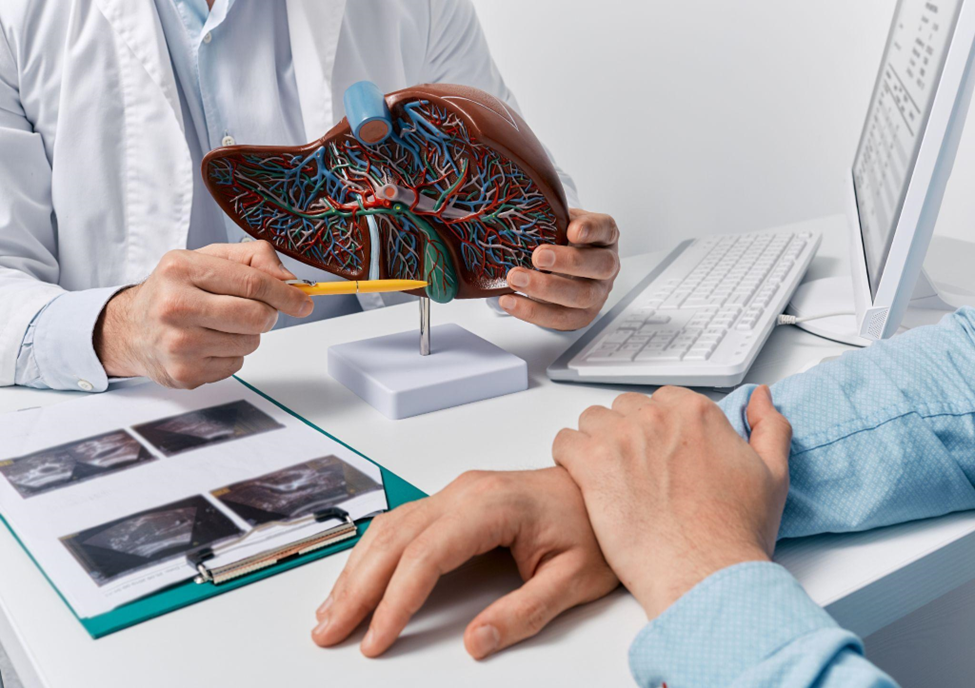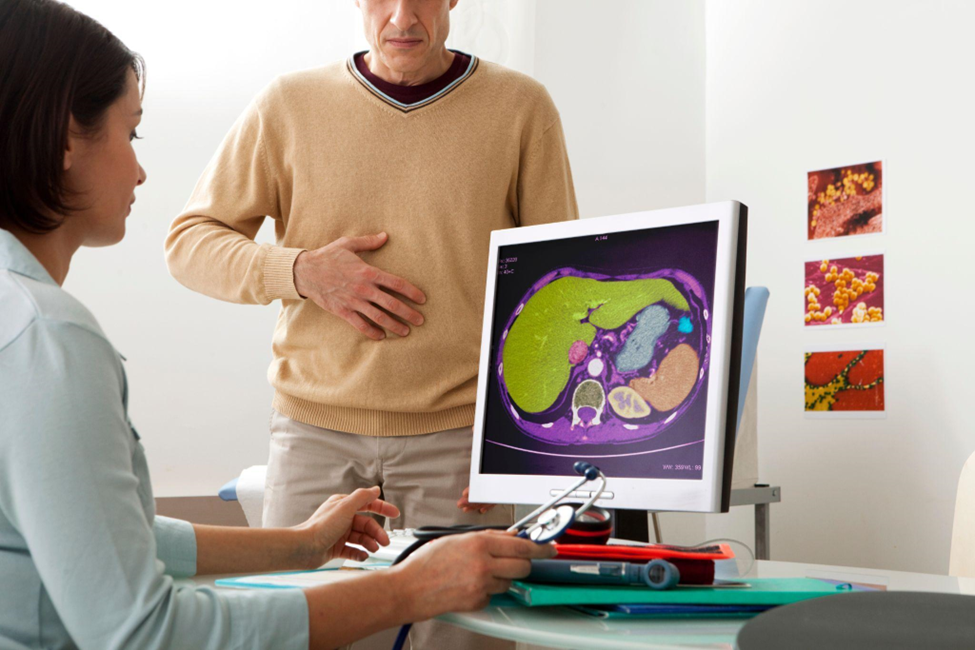
The Liver: Functions & Common Disorders
The liver is the body’s multitasker. It is involved in a wide range of vital functions in the body. This major organ can experience issues or malfunction from many types of diseases. Read on to discover more about this organ and its common disorders.
Liver 101: The Multifunctional Organ and Its Vital Roles
The liver’s location in the body is in the upper right abdomen (stomach), just below where your diaphragm is located. Another smaller portion can be found in the upper left abdomen. Your liver weighs three pounds and is the largest solid organ in the body. The main function of the liver is to regulate metabolic functions, such as:
- Breaking down fats and proteins to turn them into energy
- Minimizing the harmful effects of toxins and removing them from the blood
- Storing glucose, iron, and minerals for the body to use
Bile production is another major function of the liver. Bile is necessary for the breakdown and absorption of fats, and a healthy liver produces approximately 800-1000 mL of bile per day.1
Your liver is also vital for the breakdown of red blood cells that are old or damaged, and it helps your immune system fight invaders. If that weren’t enough, this hard-working organ also has another superpower: the capacity to regenerate. Even if 90% of the liver has been removed, the liver can return to its full size.2
At Crystal Run Healthcare, our gastroenterologists diagnose and treat a range of conditions related to the liver, as it’s an important organ that supports your entire GI system.
Common Disorders: From Fatty Liver Disease to Hepatitis

Because the liver does so much work for the body, it also can develop many different disorders. Some common types of liver disease include hepatitis, cirrhosis, cancer, and nonalcoholic fatty liver disease.
Nonalcoholic fatty liver disease (NAFLD) occurs when excess fat builds up in the organ. Too much fat in the liver can cause damage and inflammation. Another form of NAFLD is nonalcoholic steatohepatitis (NASH), which causes the development of scar tissue.
Cirrhosis is the development of scar tissue. The scar tissue replaces healthy tissue, and the condition has several causes, including long-term heavy alcohol use.
Liver cancer refers to cancer that starts in the organ itself. Cancer can also begin elsewhere and spread to the liver.
Hepatitis refers to viral infection causing inflammation. Hepatitis A is most commonly associated with poor sanitation and unclean drinking water. Hepatitis B can be contracted via unsafe sexual intercourse and the sharing of needles. Hepatitis C can also be contracted via needles. Both hepatitis B and C can lead to liver failure, cirrhosis, and cancer.
Symptoms and Early Detection: Recognizing When Your Liver Needs Attention
Some signs and symptoms of liver problems vary and can include:
- Abdominal discomfort and swelling
- Unexplained weight loss
- Chronic fatigue and weakness, despite getting sufficient rest
- Feeling pain in the abdomen
- Lighter stool and darker urine color
- Jaundice or the yellowing of the eyes and skin3
If you are experiencing one or more of the above symptoms of liver disease, it’s important to talk to your doctor. The earlier that liver disease is detected, the higher the chances of being able to manage it.
What You Can Do to Prevent or Manage Liver Disease
Whether you wish to prevent liver disease or have been diagnosed with a condition that requires management, there are a range of changes you can make to your lifestyle.
Improving your diet and exercise are the two main strategies for maintaining liver health, as well as common fatty liver disease treatments. A balanced diet of whole grains, vegetables, fruits, and lean proteins can help promote liver health. It is important to also avoid saturated fats in your diet and exercise for at least 90 minutes a week. This will help you maintain a healthy weight, which is also vital for a healthy liver.
Because your liver is responsible for processing toxins, limiting your exposure to them or using the right kind of protection while using them is strongly recommended. Chemical bug sprays, cleaning aerosols, and other products should all be used with caution while wearing appropriate safety gear like goggles, a mask or gloves.
Avoid drinking alcohol and smoking or using illicit drugs, as these activities can cause damage to the liver. Some over-the-counter medications used for pain can also cause damage to the liver. Always practice safe sex by using condoms and other barriers to prevent STIs and STDs.4
Diagnosing Liver Conditions

Your doctor will go over your medical history and lifestyle with you and ask about your family history of health problems and symptoms. Your doctor may recommend that you get blood work done to check your complete blood count (CBC) and enzyme levels.
Other methods to check the health of your liver include getting an ultrasound, MRI, or CT scan to check for problems. If it’s warranted, a biopsy of liver tissue will be done.5
Crystal Run’s Gastroenterology Approach: Advanced Diagnostics and Comprehensive Liver Care
The liver is a multifunctional organ that can be vulnerable to several diseases, but many diseases can be managed with early diagnosis, lifestyle changes, and medical care.
Crystal Run gastroenterologists use state-of-the-art procedures, including capsule endoscopy, a camera in pill form that is swallowed and which takes thousands of pictures as it travels the digestive system. They can also perform an endoscopic ultrasound, which combines two diagnostic procedures to obtain abdominal pictures.
With locations in West Nyack, Rock Hill, Newburgh, Monroe, and Middletown, NY, comprehensive diagnostics and the medical care you need are always close to home.
If you have been experiencing pain or symptoms, or want to learn how to prevent disease, you can book your appointment with Crystal Run gastroenterologists online, or call us for more information: 845-703-6999.
Sources:
- https://www.ncbi.nlm.nih.gov/books/NBK279393/
- https://www.nih.gov/news-events/nih-research-matters/cells-maintain-repair-liver-identified
- https://www.hopkinsmedicine.org/health/conditions-and-diseases/common-characteristics-of-liver-disease
- https://www.hopkinsmedicine.org/health/wellness-and-prevention/5-ways-to-be-kind-to-your-liver
- https://liverfoundation.org/liver-diseases/diagnosing-liver-disease/

 Optum Radiology at Crystal Run Healthcare
Optum Radiology at Crystal Run Healthcare Request medical records online
Request medical records online